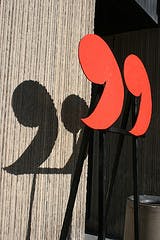In a previous article entitled “Boolean Beware: The Case of the Questionable Question Marks,” the case was brought forth as to why, when searching both the LinkedIn and Taleo resume databases, you had to make sure you were using the “correct” quotation marks or else the search results would be random, incorrect, and almost useless.
Specifically we discussed the situation in which a recruiter writes a lengthy Boolean string that is too long for the recruiter to see the whole string at one time because of the limited number of characters allowed in the Key Words field that LinkedIn Recruiter and Taleo can view at one time. It’s important that the recruiter see the “big picture” of the string at one time in order to get a better feel for what’s working and what’s not in order to know how to tweak the string to make it more effective. Specifically, these Key Words fields display about 80-90 characters at one time when working with 400 character or longer string.
The original “solution” was to first build the string in Word where a string of any length could be viewed at once. Then the string would be copied out of Word and pasted into the Key Words field of LinkedIn Recruiter. Word uses the following 2 types of curly quotation marks as follows: ![]() and
and ![]() . The only problem is that LinkedIn Recruiter doesn’t recognize either of these types of quotation marks and treats them as if they were invisible. You can see how that could totally mess up your search results when you’re trying to use quotation marks to search for a specific phrase.
. The only problem is that LinkedIn Recruiter doesn’t recognize either of these types of quotation marks and treats them as if they were invisible. You can see how that could totally mess up your search results when you’re trying to use quotation marks to search for a specific phrase.
The next “solution” was to write the string in Word, then go over to LinkedIn Recruiter and type in one of the straight quotation marks (![]() ) copy it, go back to Word and then paste over every curly quotation mark. Finally I would copy the corrected string out of Word and then paste it into LinkedIn recruiter. I remember once pasting over 72 quotation marks one by one in one string…way too tedious.
) copy it, go back to Word and then paste over every curly quotation mark. Finally I would copy the corrected string out of Word and then paste it into LinkedIn recruiter. I remember once pasting over 72 quotation marks one by one in one string…way too tedious.
After the first article was published I got good feedback from some that if I built my strings in Notepad, I wouldn’t encounter that problem. By that time though I had about 400 pages of strings in Word Table that enabled me to have four columns for Date, Req #/Title, Recruiter’s name that I was sourcing for, and then the last column for the strings themselves.
Another “solution” came from one of the people who responded. Chris Lowe gave instructions on how to go into Word and change the settings so that every quotation mark comes out straight! No more corrections needed! Thank you Chris Lowe!
Below is the fix:
- Open Word.
- Left click on the multi-colored Microsoft ball in the upper left corner of the screen.
- A big drop down box appears. Click on the “Word Options” button near the bottom right of this box.
- Another bigger box appears. On the left side click on “Proofing.”
- On this same page click on the “AutoCorrect Options” button on the right side of this page.
- On the new page click on the “AutoFormat As You Type” Tab.
- Make sure the Box next to “Straight quotes with smart quotes” (Replace as you type) is Unchecked.
- You’re good to go!
**image source: Quinn Dombrowski
